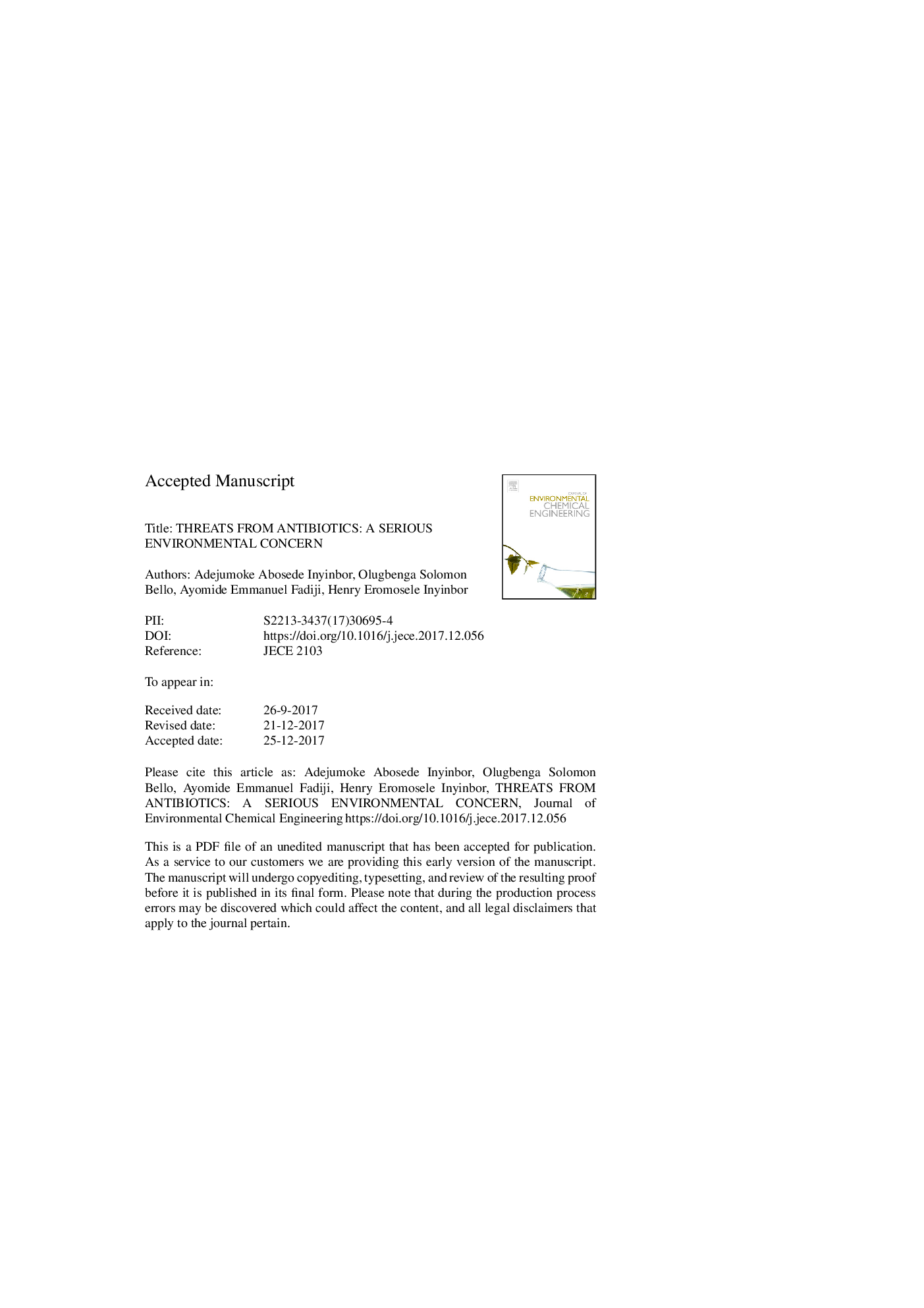| Article ID | Journal | Published Year | Pages | File Type |
|---|---|---|---|---|
| 6664055 | Journal of Environmental Chemical Engineering | 2018 | 42 Pages |
Abstract
Antibiotics are bioactive substances, used as human and animal medicines for illness prevention, disease treatment and growth promotion. They are considered to be pseudo persistent given their continuous input in the environment. Antibiotics enter agro ecosystems through several routes such as wastewater irrigation, soil application, animal manures or bio-solids which are mostly biologically active thus creating potential risks to the environment. They are present in different environmental matrices at low concentrations as residues. Antibiotic residues enter the environment primarily via urine, feces and manure from humans and animals after they have taken the medication, as well as from manufacturing wastewater. These residues contaminate the soil, surface water, and groundwater by leaching or runoff and ultimately breed antibiotic-resistant bacteria (ARB) and genes (ARG). These triune threat viz antibiotics, ARB and ARG have not been effectively removed by various treatment in wastewater treatment plants. Here, we put together existing knowledge and aim at providing in-depth knowledge to the extent to which a wide range of treatment processes determine the ultimate fate of antibiotic-bred threats (ARB and ARG) in conventional and advanced wastewater treatment. The use of antibiotics is inevitable, hence studies focusing on minimizing their discharge into the environment viz-a-viz support future regulatory measures are of great importance.
Related Topics
Physical Sciences and Engineering
Chemical Engineering
Chemical Engineering (General)
Authors
Adejumoke Abosede Inyinbor, Olugbenga Solomon Bello, Ayomide Emmanuel Fadiji, Henry Eromosele Inyinbor,
